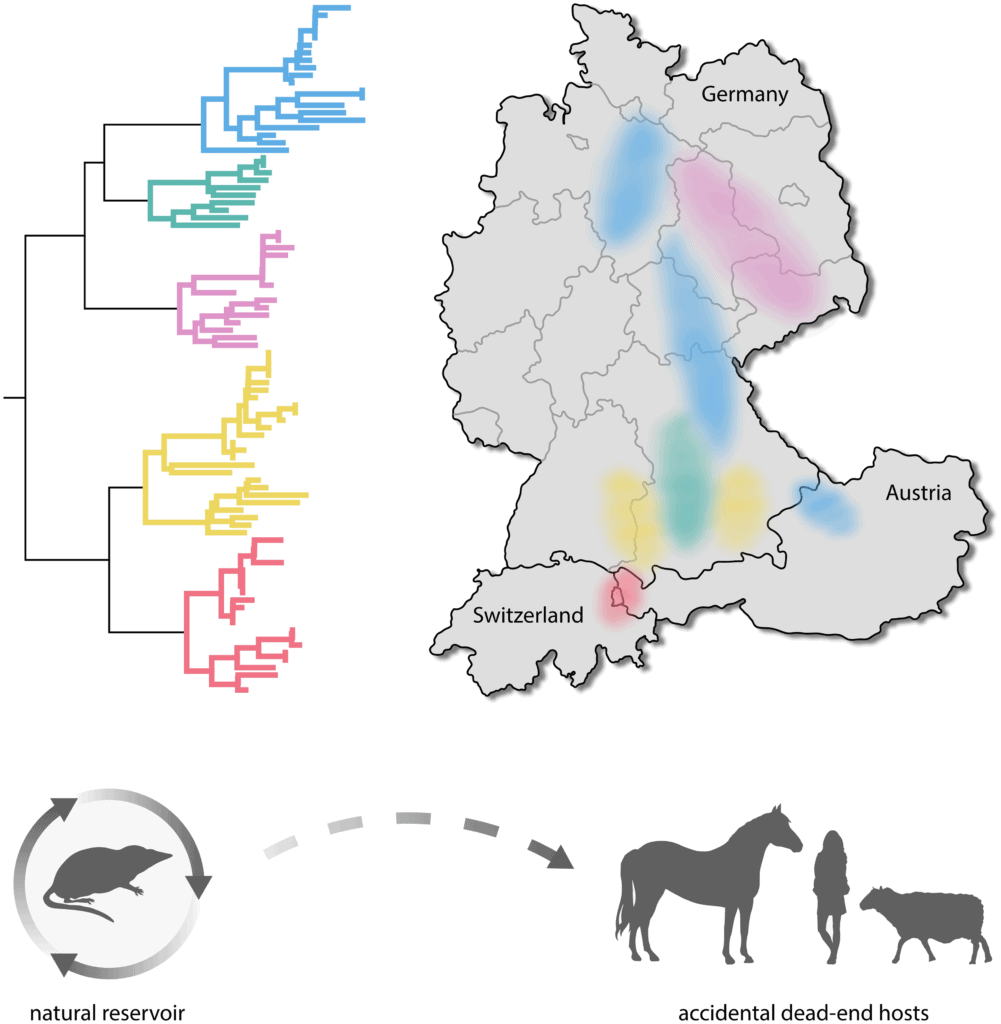
In a recent Lancet Infectious Diseases publication, researchers describe eight human fatalities in Germany caused by Borna disease virus 1 (BoDV-1) and suggest that wider testing for the disease may be useful in regions where the virus occurs in the wild.
The study was based on data collected from the brain tissue of 56 patients who died of an unidentified virus and presented with encephalitis (inflammation of the brain). Six of those patients had BoDV-1, and two were likely infected. The newly confirmed cases raise the number of published BoDV-1 deaths in the endemic area to 14.
All patients in which the virus has been newly diagnosed died between 1999 and 2019, and they all lived in southern Germany. However, the authors cannot rule out that it could be behind milder cases of encephalitis, especially in regions of central Europe where the infected host animal species occur in the wild. It was thought it might play a role in psychiatric disorders, such as depression or schizophrenia, but until the virus was reported in four cases in 2018, its links to unexplained encephalitis were rarely investigated.
Originally identified in sheep and horses in Europe, BoDV has since been found to occur in a wide range of warm-blooded animals including birds, cattle, cats, and primates and has been found in animals in Europe, Asia, Africa, and North America. The virus name is derived from the town of Borna in Saxony, Germany, which suffered an epidemic of the disease in horses in 1885.

BoDV-1-infected bicolored white-toothed shrews can be found in Germany, Austria, Switzerland, and Liechtenstein, but how the disease virus jumps from shrews to humans is not yet understood. Symptoms in infected people start with a fever, headache, and confusion, and continue with signs of brain disease such as an unsteady gait, memory loss, seizures, and a progressive loss of consciousness. In the new cases, symptoms deteriorated rapidly following patients’ admission to hospital, leading to deep coma and death. All eight patients died within 16 to 57 days of admission.
“Our findings indicate that Borna disease virus infection has to be considered a severe and potentially lethal human disease transmitted from a wildlife reservoir. However, it’s not a newly-emerging disease, but one that appears to have occurred unnoticed in humans for at least decades, and may have caused other unexplained cases of encephalitis in regions where the virus is endemic in the host shrew populations,” says Professor Barbara Schmidt from Regensburg University Hospital, Germany.
Writing in an accompanying commentary, Tomoyuki Honda, Ph.D. from Osaka University, Japan, said the study “has several implications for the pathology and epidemiology of bornavirus infection. It is time to relaunch human bornavirus research based on a theoretical framework that integrates the knowledge from these confirmed human bornavirus cases.”









